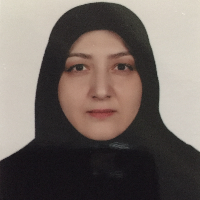A Comparative Study of the Rehabilitation Services Systems for People With Disabilities
Providing desirable rehabilitation services to people with disabilities has always been one of the most critical concerns of the health system in all countries. Today, it is crucial for policymakers and health care providers to recognize the different systems for providing rehabilitation services to people with disabilities. In this regard, it is beneficial to conduct comparative studies and use successful countries’ experiences in this subject. This comparison-analytical study aimed to compare the systems for providing rehabilitation services to people with disabilities.
This comparative study was conducted in nine countries in 2020. To determine the comparison framework in this research, four dimensions of health systems’ functions were used based on the 2000 report of the World Health Organization. The countries were compared in dimensions of stewardship, resource production, financing, and service provision. Findings obtained from each country were presented separately in the comparative tables. The model used in this comparative study was based on the Beredy Model that contains four stages of description, interpretation, proximity, and comparison. In the present study, the purposive sampling method was used. The statistical population included rehabilitation systems globally, and the research examples were Iran, China, Turkey, India, the USA, Mexico, Germany, England, and South Africa. Criteria for entering the research according to the functional model of the World Health Organization were the availability of data and selecting at least one country from each continent of America, Europe, Asia, and Africa.
The findings showed that in Iran, the Welfare Organization was responsible for providing rehabilitation services for people with disabilities, while in other countries, it was the Ministry of Health. Also, to compare resource production, two staff training indicators and access to comprehensive national data were used. In all countries studied, the training of specialized human resources is done through the university system. Iran, India, and Mexico did not have full access to comprehensive national data, but the United States, Germany, China, South Africa, and Turkey provided the platform for planning and policy-making. Moreover, funding in Germany, the United States, China, and Turkey is mainly provided through the insurance system. In the United Kingdom, it is mainly provided through tax, but in Iran, it is provided through subsidies from the public revenues and taxes. Finally, besides the private sector, rehabilitation services in Iran’s public sector were provided incoherently by various organizations. Some of these organizations are the Ministry of Health and Medical Education, the Exceptional Education Organization, the Red Crescent, the State Welfare Organization, and the Martyrs and Veterans Affairs Foundation, while in other countries, these services are often provided through hospitals and the private sectors.
Despite the numerous strengths in the system of providing rehabilitation services to the disabled in Iran, the integration of the rehabilitation sectors of various organizations within the Ministry of Health not only increases the inter-sectoral and intra-sectoral coordination, the coherence of management, and unified policy, but also leads to reduced costs, proper allocation of resources and increased financial resources in this sector. Besides, it leads to a reduction in overlapping tasks and responsibilities and prevention of duplication of work, training of specialized personnel based on the needs, and finally providing more desirable services. Therefore, policymakers and planners must review and reform the laws and processes to form a system for providing rehabilitation services to the disabled in Iran.
- حق عضویت دریافتی صرف حمایت از نشریات عضو و نگهداری، تکمیل و توسعه مگیران میشود.
- پرداخت حق اشتراک و دانلود مقالات اجازه بازنشر آن در سایر رسانههای چاپی و دیجیتال را به کاربر نمیدهد.


